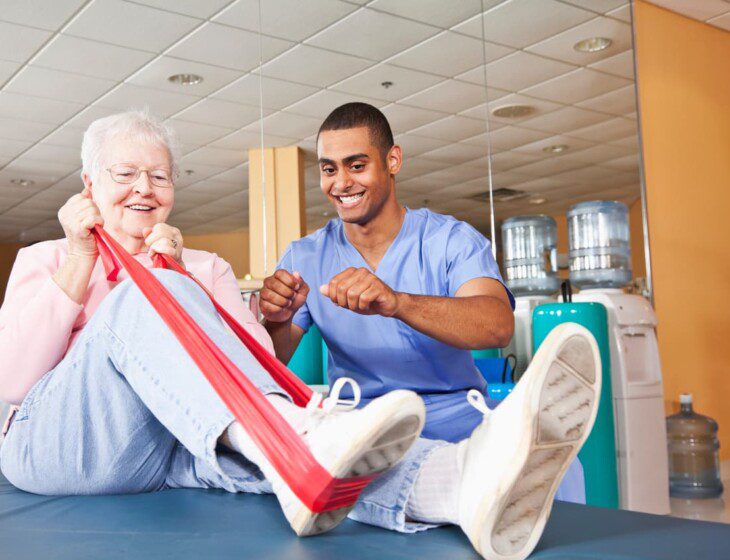The health of our residents at Village on the Green is of the utmost importance, which is reflected in our award-winning skilled nursing and rehabilitation services. Our newly opened state-of-the-art Health Center represents our commitment to providing a full continuum of care for the men and women who have come to call our community in Longwood, Florida, their home.
What many older adults may not realize is that range of motion is a critical component of their health. Without it, living independently can be a real challenge. But the good news is that we have occupational therapists on staff who can help make sure our residents have the tools they need to maintain the lifestyle to which they’ve become accustomed.
Why is range of motion important?
Range of motion is an important factor in your daily life — even though you may not know it. What is range of motion, exactly? It’s the extent of movement for each joint in your body. Maintaining sufficient range of motion in each of your joints is essential to living independently and staying mobile. Not only can impaired or limited range of motion impede your ability to complete everyday tasks, but it can also contribute to increased pain and lead to further complications, such as falls, contractures, skin breakdown and reduced mobility.
Different types of range of motion include flexion/extension, abduction/adduction, rotation, supination/pronation, inversion/eversion and deviation.
How can occupational therapy help improve range of motion?
You’ve no doubt heard of physical therapists, but you may be unfamiliar with occupational therapists. What you need to know about occupational therapy is that the focus is always on the patient’s ability to perform activities of daily life with the greatest level of independence. They have nothing but the highest quality of life in mind for you.
When it comes to improving your range of motion, an occupational therapist can provide treatments if there is impairment. They will develop adaptive strategies and modifications to improve functional independence until your range of motion goals are achieved. Their treatments extend to every part of your body where range of motion is involved.
Hip Range of Motion
Your hips are the center of movement for your body, so keeping them loose is critical to improving your ability to perform everyday activities. You can improve the range of motion in your hips through a number of different techniques under the guidance of an occupational therapist. Activities to boost the range of motion in your hips include lower body dressing, tub transfers, navigation of steps, neuromuscular reeducation or positioning (if wheelchair- or bed-bound).
Knee Range of Motion
Riding a bicycle and going for a walk both require you to bend and straighten your knees. If the movement in your knees is limited, both activities can become strenuous. Occupational therapists can improve the range of motion in your knees through lower body dressing, navigation of steps, neuromuscular reeducation, positioning (if wheelchair- or bed-bound) and performance of functional transfers to the toilet, tub or shower.
Shoulder Range of Motion
Your shoulders have the ability to move more than most joints, and your range of motion will depend on how far you can move each shoulder in different directions without pain. Limited flexibility in your shoulders can make even the simplest household tasks more difficult. Upper body dressing, upper body bathing, exercises with dowels, pulleys and a wall ladder, neuromuscular reeducation and neuromuscular electrical stimulation (NMES) are among the activities an occupational therapist would use to exercise your shoulders.
Maintain your independence with occupational therapy
As a resident of an independent living community, it goes without saying that you value being able to live independently. Occupational therapy is a means of maintaining your independence, especially if you are recovering from an injury or surgery. The quickest way to get back on your feet — literally and figuratively — is with the help of an occupational therapist who understands how important it is for you to perform activities of daily life on your own.
At Village on the Green, you can work with an occupational therapist to develop a program tailored to your needs and designed to facilitate improvement or maintain range of motion in each joint. This can be accomplished through practiced performance of everyday tasks, repetition of exercises designed to increase range of motion and additional tools as needed.
If you’d like to learn more about Village on the Green or would take a tour of our new health center, fill out the form below or call us at 407-682-0230.
